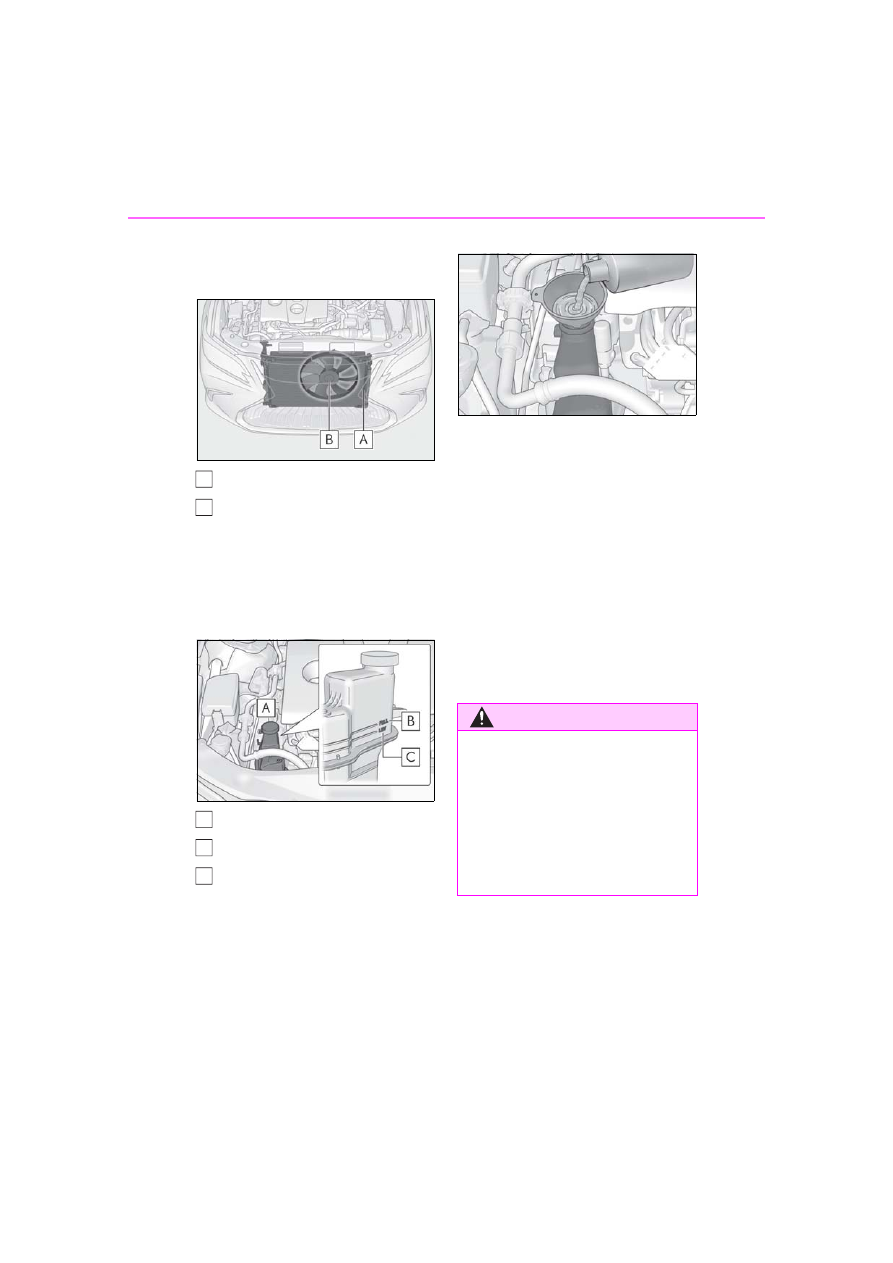LEXUS ES 300H (2019 year). Instruction - part 25

390
7-2. Steps to take in an emergency
3
After the hybrid system has cooled
down, inspect the hoses and radia-
tor core (radiator) for any leaks.
Radiator
Cooling fan
If a large amount of coolant leaks, immedi-
ately contact your Lexus dealer.
4
The coolant level is satisfactory if it
is between the “FULL” and “LOW”
lines on the reservoir.
Reservoir
“FULL” line
“LOW” line
5
Add coolant if necessary.
Water can be used in an emergency if
power control unit coolant is unavailable.
6
After stopping the hybrid system
and waiting for 5 minutes or more,
start the hybrid system again and
check if “Hybrid system overheated
Output power reduced” is shown
on the multi-information display.
If the message does not disappear:
Stop the hybrid system and contact your
Lexus dealer.
If the message is not displayed:
The hybrid system temperature has
dropped and the vehicle may be driven
normally.
However, if the message appears again fre-
quently, contact your Lexus dealer.
A
B
A
B
C
WARNING
■
When inspecting under the hood of
your vehicle
Observe the following precautions.
Failure to do so may result in serious
injury such as burns.
●
If steam is seen coming from under the
hood, do not open the hood until the
steam has subsided. The engine com-
partment may be very hot.